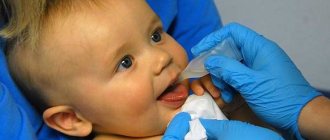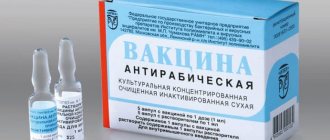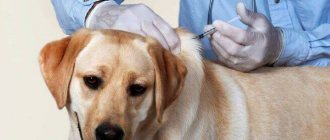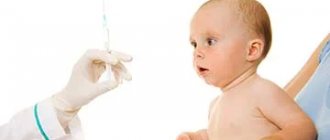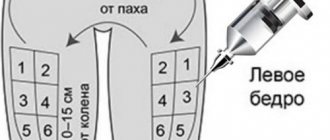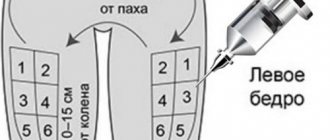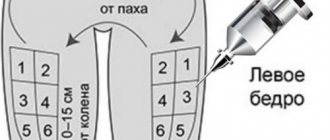Cats have always been and remain the most affectionate of all pets ever domesticated by humans. But they, like dogs, should be protected from a number of deadly diseases. Rabies in cats is a terrible disease not only for the animal, but also for its owner. Infection occurs by penetration of the virus through the skin, mucous membranes through salivation or through bites.
If the virus has already begun to progress, then the ending is inevitable: the pathogen attacks the nervous system with the development of irreversible consequences leading to painful death. There is a solution: a vaccine against rabies. But before we begin to cover the topic of vaccinations, let’s touch on the symptoms of this disease, its forms and stages.
How the disease develops
For the disease to develop, the infection must enter the bloodstream. This occurs through the wound surface of the kitten’s skin, mucous membranes, or through bites from an infected animal.
First stage
The pathogen begins to actively multiply in the body. There are no obvious symptoms right away: until they appear, there is a hidden or incubation period. Visually, at this time, the cat may experience lethargy, refusal to eat, sometimes coughing and fever. The bitten area becomes inflamed, and redness and swelling develop around the damaged skin. These phenomena are accompanied by local itching and pain, causing discomfort to the pet.
Naturally, a cat cannot complain about what bothers it. However, any practicing veterinarian will tell you that this stage is characterized by muscle pain and nausea.
Second stage
Characterized by an increase in symptoms of the disease. The cat begins to behave inappropriately, trying to attack and bite the owner. At times, a sick kitten displays excessive obsession, which is accompanied by elements of aggression. Fear and a desire to run away may appear. Sometimes photophobia is registered: the cat tries to go into the darkness and hide. Symptoms are accompanied by drooling, difficulty swallowing and a number of other body functions.
Third stage
The third and final (terminal) stage consists of the development of convulsions and paralysis. The cat dies as a result of damage to the main centers in the brain that provide vital functions (respiratory, vasomotor, etc.). There are three main forms of manifestation of rabies:
- violent, when the cat shows all the signs of the disease with aggression, irritation, swallowing inedible objects, etc.;
- paralytic, or quiet: the cat seems affectionate and intrusive, but there is profuse salivation, difficulty swallowing, and drooping jaw;
- atypically occurring and most difficult to recognize: the symptoms of brain damage are hidden, and the virus manifests itself in the form of bloody diarrhea, vomiting and exhaustion.
Attention! If your pet exhibits characteristic symptoms and was bitten by a stray animal, consult a doctor immediately! This virus is extremely dangerous not only for the cat, but also for you!
To protect yourself and your pet, there are rabies vaccinations.
Danger and modes of transmission of rabies
Rabies is caused by the Rabies lyssavirus virus, which can infect all warm-blooded animals without exception, including humans, so it is better for the animal owner to worry about the safety of coexistence in advance. Transmission occurs through the saliva of a sick individual during a bite. Also dangerous is contaminated saliva that gets on injured skin or mucous membranes. Having penetrated the body, the infection quickly spreads along the nerve fibers, penetrates the spinal cord and brain, where it accumulates and causes irreversible destruction. The incubation period, that is, the period from the moment of infection to the appearance of the first symptoms, can vary from 7 to 14 days.
The danger of the disease lies in its lethality for animals. A sick cat first becomes lethargic and timid, and then clearly expresses its aggression with attacks and bites. At the second manic stage of the disease, one of the most well-known symptoms is noted - the inability to swallow saliva due to spasm of the larynx, which leads to its constant flow from the mouth. At the last stage, paralysis of the entire body occurs, leading to inevitable death.
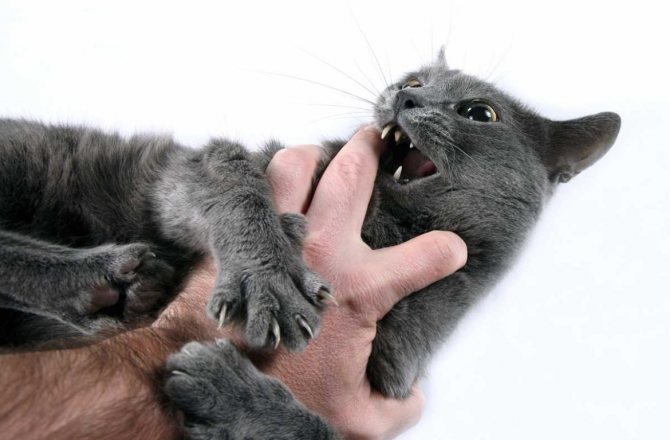
At the second stage of rabies development, the cat becomes aggressive, attacking and biting a person, which poses a direct threat to him of also getting sick.
The mechanism of action of rabies vaccines and their varieties
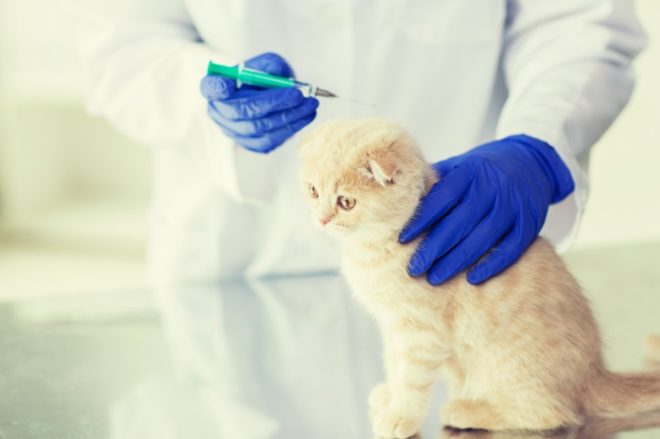
The rabies vaccine is “designed” to mobilize immune forces. Anti-rabies is also no exception. Different types of grafting material contain the most weakened viruses or their products. In response to the introduction of these foreign substances, which are antigens, the kitten’s body begins to produce antibodies, i.e., means of protection. This is how immunity is formed.
There are “live”, modified and so-called “dead” or inactivated vaccines. Live preparations use a weakened virus that is not capable of causing harm to an animal, while the body develops protection against it. Vaccines with an inactivated pathogen, the introduction of which completely guarantees safety, are considered acceptable.
When using vaccinations, there remains, albeit an insignificant, but still real possibility of reactivation of the pathogen. However, such rabies vaccines are more effective.
Mono-vaccines, containing agents only against this virus, and poly-vaccines, which form protection against several dangerous diseases, are used as anti-rabies drugs. It is worth noting the one-component Nobivac Rabies (manufacturer - the Netherlands), against rabies in cats, which is actively used and recommended by many veterinarians. The following drugs are similar:
- Rabizin;
- Rabikan;
- Defensor – 3.
Polyvaccines include “Quadricat”: it protects against panleukopenia, rabies, calicivirus and herpesvirus infections.
Vaccinations are low-toxic, well tolerated by cats, and provide lasting immunity.
Attention! Almost all infected animals die. To protect your pet from mortal danger, you just need to vaccinate it on time.
Can an animal get sick or even die after vaccination?
One dose of a vaccine from any manufacturer contains a MINIMUM amount of antigen that can trigger an immune response in the body (i.e., the production of specific antibodies). The vaccine itself cannot cause disease.
But sometimes complications are possible. What does this have to do with?
1.
In the first place is the possibility of vaccination during the incubation period (infection has already occurred, but has not clinically manifested itself) of the disease.
In this case, the vaccine will enhance the effect of the main infectious agent
In this regard, any newly acquired animal (no matter where it comes from - from a nursery or from a poultry market) requires quarantine for 7-14 days
During this time, you isolate him from other pets (if there are any), perform deworming (one-time administration of an anthelmintic drug) and observe the slightest changes in behavior and well-being. The incubation period for most diseases is 3–10 days (with plague up to 21 days).
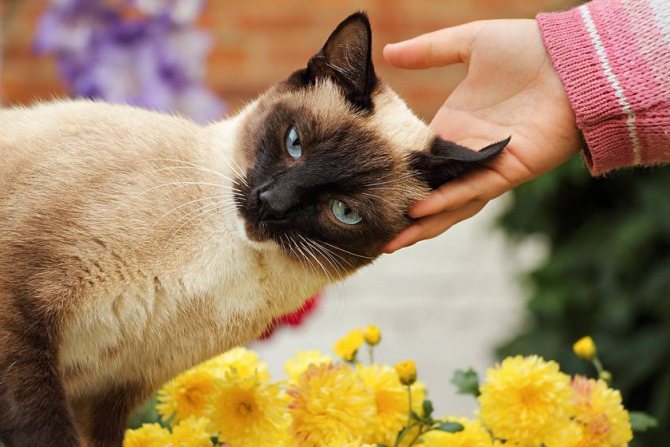
2.
In second place as possible complications is an allergic reaction of the person being vaccinated to one of the components of the vaccine (sometimes to the diluent).
In this case, the reaction will appear after 15-30 minutes. in the form of sudden excitement, redness of the mucous membranes, salivation, rapid breathing and swelling.
Therefore, the specialist performing the vaccination always stays for 15-30 minutes, having antihistamines and desensitizing drugs ready. The owner also needs to have diphenhydramine, suprastin or tavegil in his first aid kit in case an allergic reaction occurs later.
3.
Well, in third place in terms of the frequency of possible complications in the post-vaccination period is the hypoimmune state of the animal (an animal with weak immunity).
The body of any animal, like ours, is a constant battlefield between pathogenic agents (bacteria, viruses, fungi and chemicals) coming from outside, and the body’s defense mechanisms (skin, gastrointestinal mucosa, lymphoid tissue, specific antibodies, etc. ).
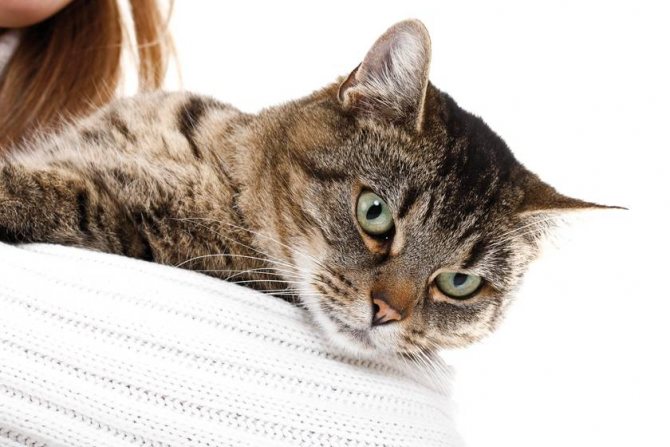
This battle occurs constantly, and the extent to which the body defends itself depends on its overall health.
Therefore, if an animal is weakened by starvation, hypothermia, overheating, stress (due to a change of habitat or lack of contact with the owner), helminthic infestations (which in itself is a disease), then it will not be able to produce the required amount of antibodies in response to vaccination. The effect of the vaccination will be missed.
Such an animal, even after vaccination, will be susceptible to infectious diseases. Moreover, vaccination itself in such an animal can act as an element in weakening the weakened immune system and provoke the occurrence of hidden diseases
This is why it is important to vaccinate a clinically healthy animal that has undergone anthelmintic treatment.
Contraindications for vaccination:
- increase in body temperature
- exhaustion;
- chronic, subacute and acute diseases;
- acquired immunodeficiency;
- recent injection (at least 3 weeks) of appropriate hyperimmune serum;
- helminths.
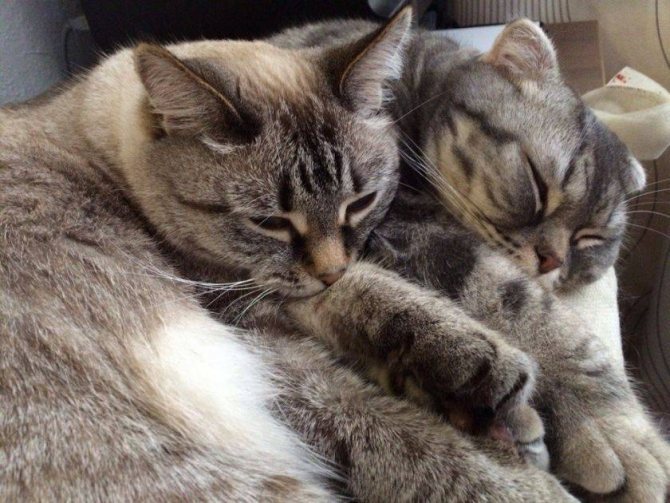
How do you prepare for vaccination?
Two weeks before vaccination, carefully monitor the behavior and health of your pet.
Particular attention should be paid to the animal’s appetite, its stool, whether it is lethargic or active, and how much it sleeps. 7-10 days before the expected date of vaccination, it is necessary to carry out deworming, that is, to drive away worms. 7-10 days before the expected date of vaccination it is necessary to carry out deworming, that is, to drive away worms
7-10 days before the expected date of vaccination, it is necessary to carry out deworming, that is, to drive away worms.
This is a requirement. Otherwise, severe complications from any, even the safest, vaccine are possible.
Can vaccination be dangerous?
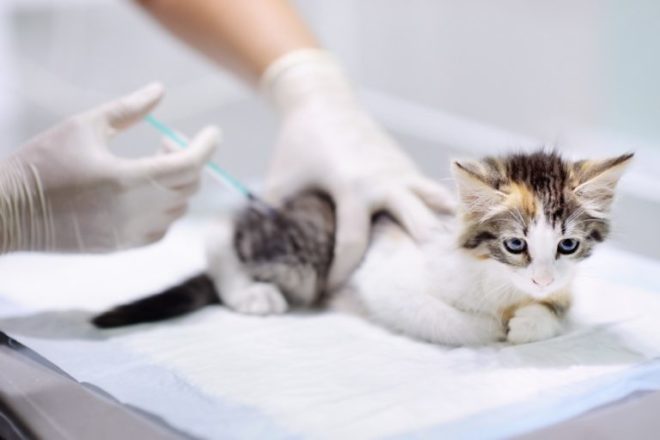
Like everything in the modern world, veterinary medicine does not stand still, and its achievements in pharmacology have long stepped forward. A number of safe and effective drugs are produced that stimulate the development of intense immunity.
Don't be afraid for your pet: the vaccines have been tested many times on laboratory animals and successfully put into production. After their administration, domestic animals sometimes experience only slight lethargy or apathy, decreased appetite and rarely hyperthermia, which in most cases also occurs when vaccinated against other viruses. These symptoms should not cause alarm and will resolve without veterinary care.
What events will you not be allowed to participate in if you do not have a vaccination mark?
Protection against a fatal disease of your beloved pet is an undeniable advantage of vaccinations. If you do not part with it even on trips and during various events, then doing without a mark in the veterinary passport will be extremely problematic. It is needed in the following cases:
- if you are planning to travel abroad with your pet;
- when participating in exhibitions of purebred cats;
- for registration of appropriate documentation for breeding;
- when traveling on public transport, on planes, trains, you will be required to have a veterinary document;
- if it is necessary to keep a cat while the owner is away.
It is advisable to carry out vaccinations, especially the first ones, in a veterinary clinic under the supervision of a specialist. An allergic reaction to the administration of the drug may occur. At home, without the appropriate knowledge and skills, it will be difficult to help an animal.
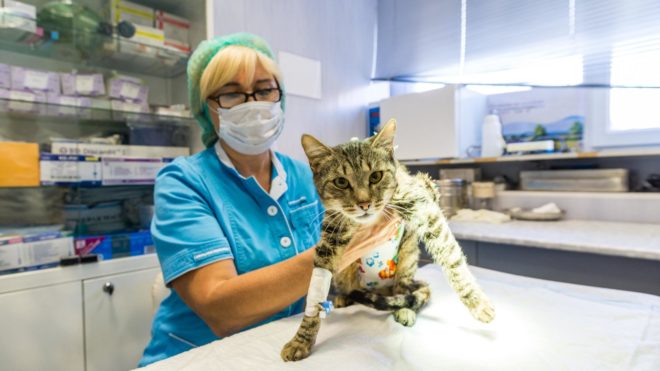
There are options when a veterinarian comes to your home upon prior call. In this case, he will do all the necessary manipulations and put marks in the animal’s passport.
Is vaccination necessary?
Pets practically become members of the family
It is important that they maintain their health. However, there is always a risk of contracting dangerous diseases
Vaccinating your cat is a reliable and time-tested means of eliminating this risk.

However, in this case, temporary complications can sometimes occur. Vaccination is the infection of an animal with weakened pathogens, which it can easily cope with and develop immunity to this disease. This procedure protects not only the pet, but also its owner from serious dangers.
Sometimes it seems that by following a certain regime for a cat, you can guarantee the absence of infection. However, in reality it is impossible to completely avoid this danger. Even keeping a cat in an apartment does not guarantee its safety. Pathogenic microorganisms can be brought into the home, for example, on shoes.
Vaccination is necessary for the following reasons:
- Rabies is a deadly disease. Vaccination protects against it. But if this is not done, the animal may become infected and die.
- A sick pet becomes dangerous to other animals.
- A cat with rabies can infect humans with this deadly disease.
After the vaccination procedure, the risk of contracting an animal with rabies is completely eliminated.
First vaccination: when to do and how to act in subsequent stages
Cases of disease in street animals are periodically recorded in all regions of Russia, so it is very important to carry out the entire course of vaccinations on time and correctly.
A small kitten’s immune system is not ready for such a load. But when he reaches three months, the baby is given the first anti-rabies injection.
Attention! It is not allowed to immunize kittens under 3 months of age. This can negatively affect their health!
Initial immunization occurs in three stages:
- the first - three months or more;
- the second – after 14-21 days;
- upon reaching one year.
For an adult animal, subsequent revaccinations are carried out once a year.
Preparing an animal for vaccination
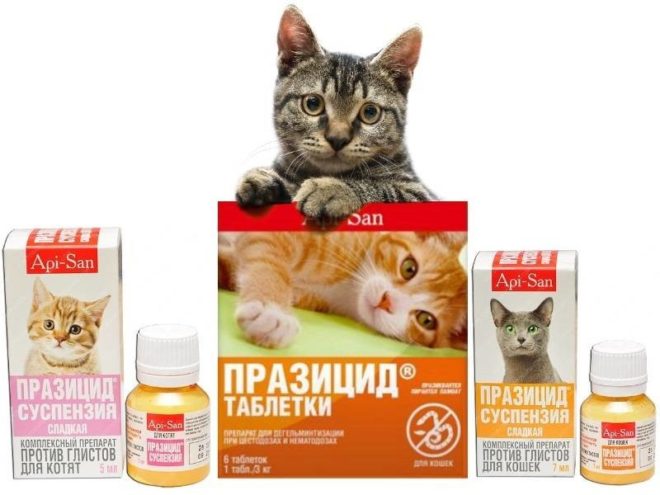
By the time the rabies vaccination is given, the animal must be completely healthy, otherwise complications may arise after the procedure or the vaccination will not have the desired effect. First of all, it is necessary to carry out deworming.
10-14 days before the injection, you need to buy an anthelmintic drug (in tablets or gel form) from a veterinary pharmacy and give it to the cat 2 hours before feeding. At the same time, strictly adhere to the instructions, observe the dosage and weight of the animal.
It is important to free the cat from unwanted “guests” on the fur - fleas and ticks. To do this, it should be treated with special insecticidal agents, the range of which is widely available in Russian pharmacies (gels, aerosols, drops, shampoos).
Before the procedure, the doctor examines the animal. Clarifies whether there have been any behavioral abnormalities recently, or whether appetite has worsened. Vaccination should be postponed or canceled under the following circumstances:
- the cat is pregnant or undergoing lactation (nursing);
- the body is weakened by an infectious disease suffered during the last month or there has been surgical intervention;
- was treated with antibacterial agents;
- for some reason the temperature is increased.
Once you are sure that the above factors are not present and the cat is healthy, you can begin the procedure. In this case, the veterinarian who performed the rabies vaccination pastes the vaccine label into the veterinary passport and makes a corresponding entry in it.
Attention! Animals are immunized for the first time at the age of 9 to 15 months. If for some reason this period was missed, vaccination is done exclusively after the change of baby teeth. After a full course of rabies vaccinations, immunity lasts up to three years.
When to start: before a year, a month, two or three?
However, vaccinations are not recommended for very young kittens. Recommended age from 2-3 months.
Calendar: schedule
- At the age of 8 weeks, the following components are required for every cat: herpesvirus, calicivirus and panleukopenia, as well as, if necessary, chlamydia and viral leukemia.
- At 12 weeks - everything is the same, as well as a rabies vaccination.
- At 15 months and then annually, we repeat all the components that were done at 12 weeks.
Panleukopenia
This disease is also called feline distemper.
Affected area: mainly intestines. This disease is viral in nature.
It is caused by parvovirus.
Rhinotracheitis
This is a disease of the eyes and respiratory system.
It also has a viral nature, only it is caused by a herpes virus.
A cat can become infected from other sick people or cats that have already had the disease.
Calicivirus
This disease is characterized by lameness, conjunctivitis, fever, etc.
The causative agent is again a virus. It enters the cat's body through saliva, eye fluid, airborne droplets, and it can also penetrate through common dishes or a tray.
Chlamydia
This is a respiratory disease.
It is in cats that usually develop a moderate infection during this disease. The causative agent is Chlamydia psittaci.
This is a microorganism that lives inside cells. There is a risk of infection if several animals live in the same room.
Viral leukemia
This is when a large number of young, immature leukocytes appear in the blood.
The causative agent, or so it is believed, is an RNA virus.
Sometimes the cause may be worms in the intestines, which owners may not even be aware of.
FIP
It is extremely rare for cats to show any signs of this disease.
It appears in the literal sense of the word “suddenly.” The causative agent is coronavirus.
Many cats that are kept in groups are infected with this virus.
The virus is spreading due to uncontrolled breeding.
When one cat is a “producer” and has connections with many females. Signs of this disease in cats under one year of age are high body temperature, peritonitis, and sometimes pleurisy.
Rabies
Scary? And rightly so. Rabies is probably the most terrible animal disease. This disease is a severe lesion of the nervous system. That is, the brain and spinal cord. Most often the disease ends in death.
There are three forms of this disease: violent, quiet, atypical. There are also quiet and atypical forms. They are less common. In any case, the fate of these animals is sad. There is no cure for rabies. The animal is simply euthanized if it is diagnosed with this disease.
You can only get vaccinated. The first vaccine is given to a kitten at approximately 3 months. From the age when he begins to contact other animals.
Trichophytosis, microsporia
In common parlance, trichophytosis is called ringworm. This is a fungal infection. The disease is dangerous not only for the health, but for the life of the animal. Transmitted to humans.
Cats are a source of infection and the cause of epidemics among people.
Kittens up to 6 months old should receive the vaccine at a dose of 1 ml - 2 ml. Exactly how much depends on their weight. Immunity begins to develop approximately within a month after receiving the vaccine. And it lasts for about a year. You can get the vaccine only after consulting a veterinarian. And only under his supervision.
For example, the Microderm vaccine named in the previous paragraph is made against trichophytosis and microsporia. Nobivak Triket. It can cause infections and diseases such as plague and rhinotracheitis. calciumvirus. Leucorifelin. The interesting thing about this drug is that it can be used to vaccinate very small kittens, 1.5 months old. Effective against plague and many other diseases.
How to monitor your cat after vaccination
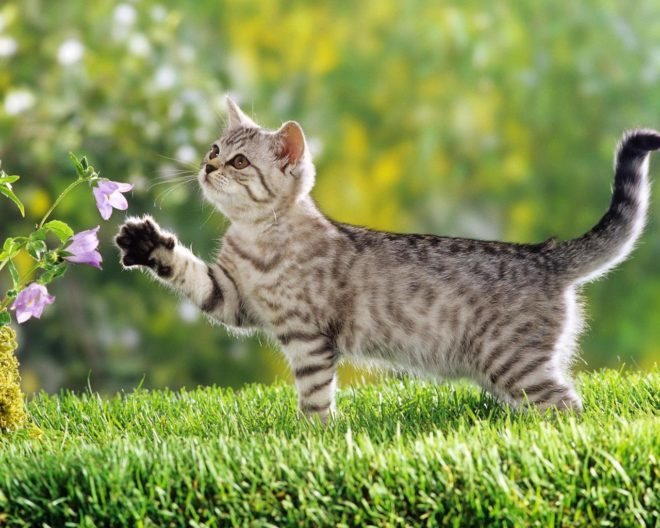
Immediately after vaccination, it is not recommended to let your pet go for walks; for two weeks the cat should not have contact with its “brothers”, as well as other animals. This precaution is allowed to avoid additional infection that can weaken the body, as well as superinfection from an animal infected with rabies. You should also refrain from swimming.
For several days, monitor the general condition of the cat and its temperature reaction. The above reversible post-vaccination symptoms usually disappear after three to four days. If this does not happen, and the cat has a fever, rashes, or other general phenomena appear, you need to inform your doctor about this.
Other complications when vaccinating cats.
Other complications following vaccine administration may include nausea, diarrhea, lethargy, fever, anorexia, claudication, neurological abnormalities, local swelling and tenderness at the site of vaccination. All these signs can appear when a cat is revaccinated.
Continuation - Types of vaccines for cats
In this case, you must contact your city hospital for a course of anti-rabies treatment. Today this is 7 injections over six months. If this is not done, there is a high probability that the person himself will contract rabies. The man dies a painful death. Read more about this here - Rabies. Video of a dying man infected with rabies.
Does a domestic cat need a rabies vaccination?
Some believe that it is not necessary to vaccinate domestic cats, because they do not leave the confines of the apartment or house. However, such an opinion is wrong. Unfortunately, the animal is at risk of infection even if it does not come into contact with infected relatives. There is a high probability that the pet owner will bring the infection from the street on his shoes. Due to the fact that these curious animals walk everywhere and sniff everything, it will not be difficult for them to pick up an infection from shoes. Unsterilized cats are also at risk because they tend to “walk” every few months and rub against shoes and other objects.
It is very important to take care in advance to prevent rabies in your pet.
You need to know that this virus is survivable. Once on the grass or soil from an infected animal, it can remain there for a long time until someone steps on it and takes it with them.
When should kittens get their first rabies vaccination?
The first vaccination for kittens is carried out at 2 months of age. At the same time, they give a vaccine against infections, but not against rabies.
Second vaccination for kittens - kittens are vaccinated 1 month after the first vaccination. Now they vaccinate cats against rabies.
How often should adult cats be vaccinated against rabies?
Everywhere, free rabies vaccinations for cats are given annually, usually from the second half of January to the end of March.
How to properly prepare a cat for a rabies vaccination?
Remember, you can only vaccinate a healthy cat that is free from parasites! Two weeks before vaccination, the cat needs to get rid of worms. If this is not done, the effect of the vaccine will be reduced, or even completely null.
Which animals cannot be vaccinated against rabies?
A cat cannot be vaccinated if:
- The cat is pregnant;
- Feeds kittens;
- weakened;
- the cat is sick or is in the recovery period after surgery;
- if the cat is taking, or has taken, antibiotics in the last two weeks;
- if the cat has been in contact with sick animals (if they become infected, vaccination can worsen the situation and become dangerous to the life and health of the cat;
- if the cat is under stress (after moving, changing surroundings, traveling), it is better to wait a week and only then vaccinate.
And, remember, only after 3 weeks after vaccination can the animal be subjected to planned surgical operations (for example, castration or sterilization).
Was your cat bitten by a stray animal? Contact a specialist!
Unfortunately, cases of rabies in “stray” animals are not that uncommon. You've obviously seen packs of dogs attacking pets peacefully walking with their owners: they say, this is not your territory!
Has your pet been bitten? Don't waste another minute, contact your veterinarian. He will examine the animal and decide on further vaccinations. Perhaps he will get vaccinated against rabies without waiting for the due date.
The doctor will monitor the kitten for ten days. During this time, the animal should be isolated. Only after this period will it be possible to lift the strict quarantine.
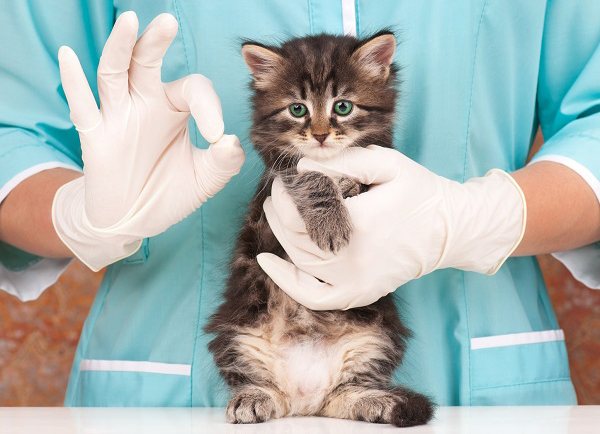
If symptoms of the disease are detected, alas, your animal is doomed, and it will also pose a potential threat to surrounding people and other animals.
If the cat behaves normally after 10 days, without showing signs of inadequacy and aggression, then dynamic observation and isolation are extended to 1.5 months.
The price of vaccination – quality or life
The cost of rabies vaccines varies widely from 300 to 2000 rubles. It depends on many factors. State veterinarians use drugs that are low cost and less effective. Private veterinarians use purified rabies vaccines from leading manufacturers with the least side effects.
In addition, there are monovalent (only for rabies in cats) and polyvalent remedies (plus for a number of other dangerous infections), which affects the price. The cost is also influenced by the region of residence, the manufacturing company and the status of the clinic you contacted.
By carrying out the necessary vaccinations on time, you will protect your pet from all dangers and preserve your health!


